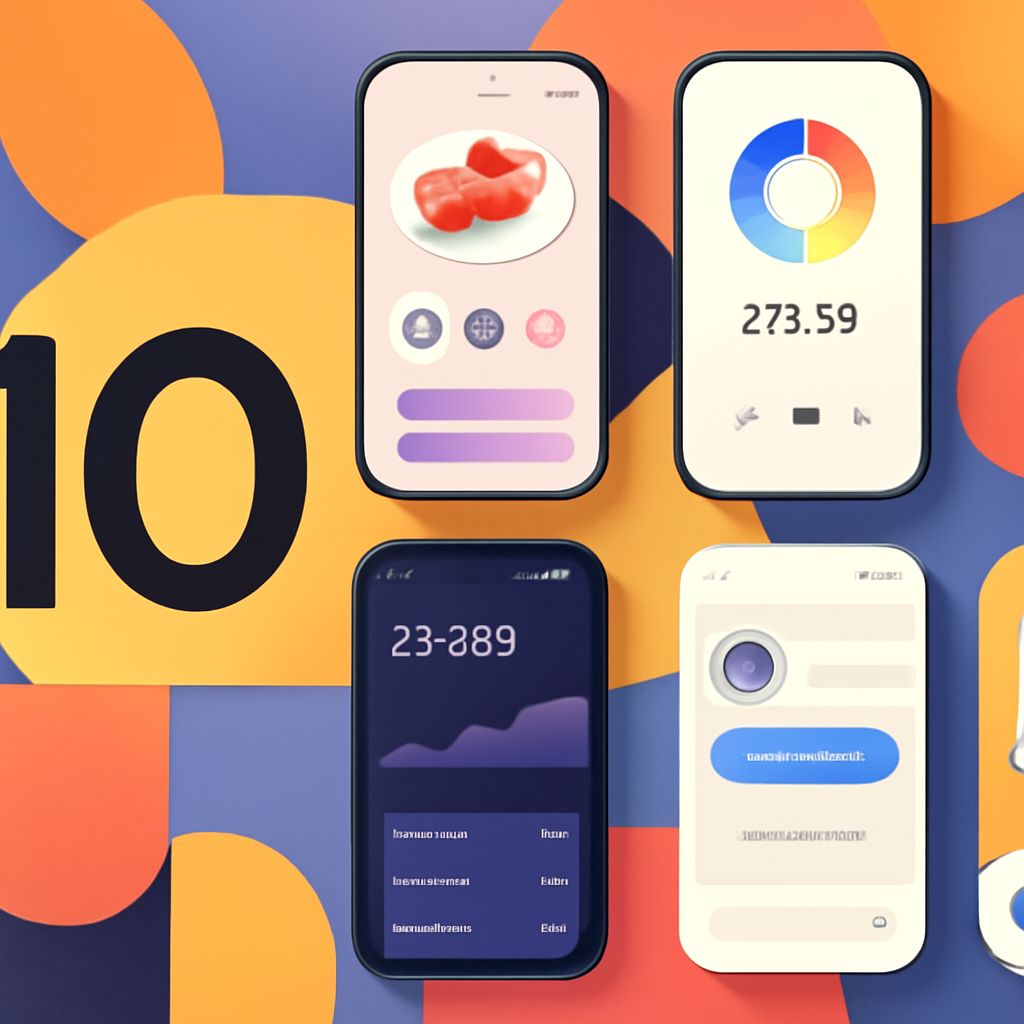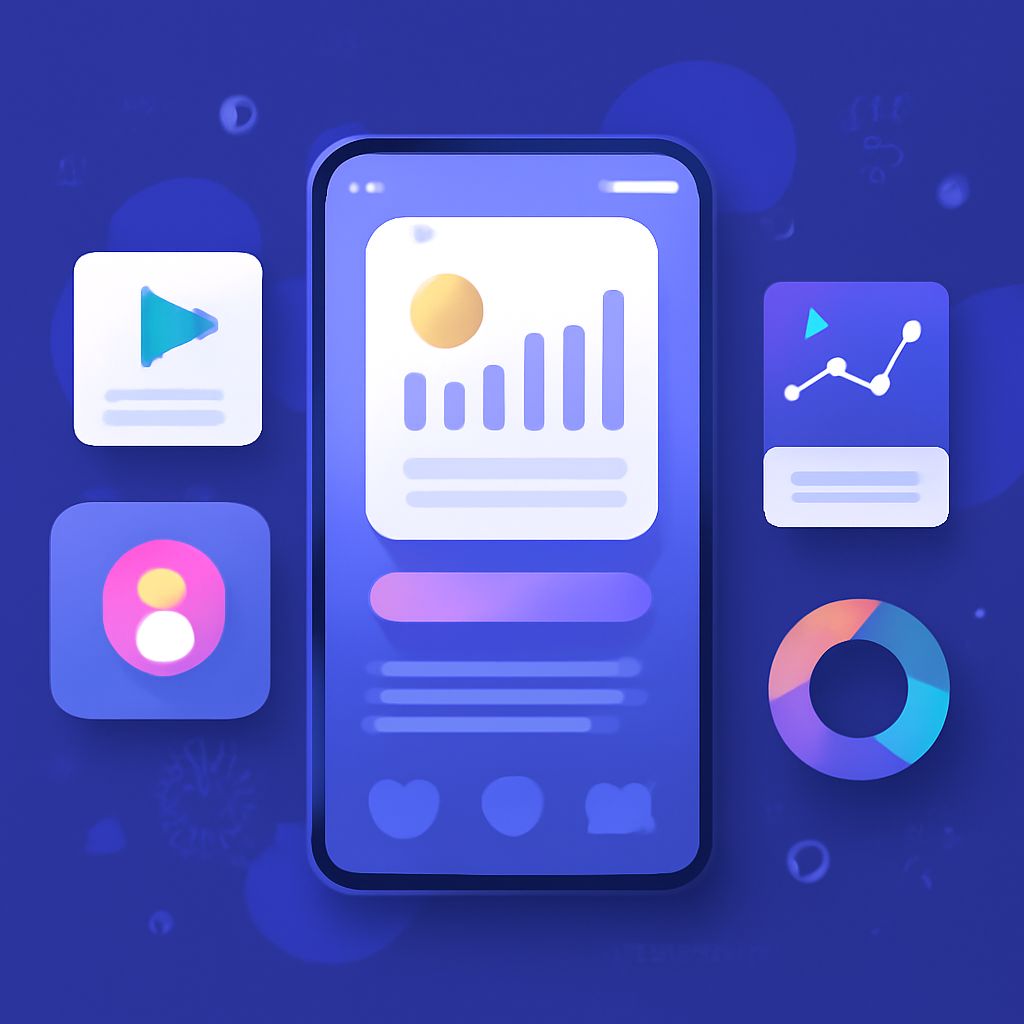Introduction
The landscape of mobile app design is constantly evolving, driven by technological advancements, user preferences, and new design paradigms. As we approach 2025, it is essential for designers and developers to stay ahead of the curve by understanding the emerging trends in mobile app UI design. This article will explore the top 10 mobile app UI design trends to watch in 2025, focusing on what they mean for user experience and app functionality.
1. Neumorphism
Neumorphism, a design style that combines skeuomorphism and flat design, will continue to gain traction in 2025. This technique uses soft shadows and highlights to create the impression of depth, resulting in a more tactile interface.
- Visual Depth: Elements appear to float above the background, enhancing user engagement.
- Soft Color Palettes: Utilizing pastel colors can help create a calming interface.
Pros and Cons
| Pros | Cons |
|---|---|
| Creates a unique visual identity | May reduce accessibility for visually impaired users |
| Enhances interactivity | Potential for design overload if not implemented carefully |
2. Minimalism
Minimalism has been a significant trend in design for several years and continues to dominate. In 2025, apps will lean more into simplicity, focusing on essential features and content.
- Clutter-Free Interface: By removing unnecessary elements, users can focus on what truly matters.
- Faster Load Times: Minimalist designs usually require fewer resources, leading to quicker performance.
Key Elements of Minimalism
- Whitespace
- Simple typography
- Reduced color schemes
3. Dark Mode
As more users seek eye-friendly options, dark mode will become a standard in 2025. This design choice not only reduces eye strain but can also save battery life on OLED screens.
- User Preference: Many users prefer the aesthetic of dark mode.
- Content Highlighting: Bright colors and images pop against dark backgrounds, enhancing visibility.
4. Voice User Interface (VUI)
The integration of voice technology in mobile apps is on the rise. By 2025, voice user interfaces will become more sophisticated, allowing users to navigate and interact with apps seamlessly.
- Hands-Free Operation: Users can engage with apps without physical interaction, enhancing convenience.
- Accessibility: Voice interfaces cater to users with disabilities, broadening app usability.
5. Augmented Reality (AR) Elements
Augmented reality is increasingly being integrated into mobile applications, particularly in retail, gaming, and education. In 2025, AR will be a common feature, providing interactive experiences.
- Enhanced User Engagement: AR features keep users engaged by providing immersive experiences.
- Real-World Interaction: Users can visualize products in their environment before making a purchase.
Examples of AR Applications
- Virtual Try-Ons in fashion apps
- AR Games like Pokémon GO
- Interior design apps allowing users to visualize furniture in their space
6. Customizable UI
Personalization in mobile app design is becoming more important. In 2025, offering customizable interfaces will allow users to tailor their experiences to suit their preferences.
- Flexible Themes: Users can choose color schemes, layouts, and font styles.
- Adaptive Features: The app adapts to user behavior, enhancing usability.
7. Microinteractions
Microinteractions—small animations or design elements that respond to user actions—will continue to enhance user experience. These subtle cues provide feedback and guide users effectively.
- Feedback Mechanism: Helps users understand the result of their actions.
- Visual Appeal: Adds a layer of aesthetic enjoyment to interactions.
8. Biometric Authentication
With increased concerns surrounding security, biometric authentication is expected to be a standard feature in many apps by 2025. This technology provides a secure and user-friendly way to access applications.
- Enhanced Security: Fingerprint and facial recognition ensure that only authorized users can access their data.
- User Convenience: Quick and easy logins eliminate the need for passwords.
9. 3D Design Elements
The use of 3D graphics in mobile apps will rise, providing a more dynamic and engaging user experience. This trend allows for more visually appealing interfaces that stand out.
- Interactive Features: Users can interact with 3D objects for a more immersive experience.
- Realism: 3D designs can enhance the overall look and feel of the app.
10. Sustainability in Design
As environmental consciousness grows, sustainability in design will become crucial. By 2025, apps will reflect eco-friendly practices through design choices and content.
- Eco-Friendly Color Schemes: Utilizing colors that promote sustainability.
- Content Focus: Providing information on sustainability efforts and encouraging greener choices.
Conclusion
As we look to the future of mobile app design, staying informed about these trends is essential for creating impactful and user-friendly applications. By embracing these design principles, developers can enhance user experience, drive engagement, and ensure their apps remain relevant in an ever-changing digital landscape. As we approach 2025, the future of mobile UI design promises to be both exciting and transformative, unlocking new possibilities for users and creators alike.
FAQ
What are the top mobile app UI design trends for 2025?
In 2025, expect to see trends like minimalistic design, dark mode, voice user interfaces, and augmented reality integration in mobile app UI design.
How can I implement minimalistic design in my mobile app?
To implement minimalistic design, focus on clean layouts, ample white space, and prioritize essential features to enhance user experience.
Why is dark mode becoming popular in mobile app design?
Dark mode reduces eye strain in low-light environments and can save battery life on OLED screens, making it a desirable feature for users.
What role does augmented reality play in mobile app UI design?
Augmented reality enhances user engagement by providing immersive experiences, allowing users to interact with digital elements in real-world environments.
How important is accessibility in mobile app UI design trends?
Accessibility is crucial as it ensures that apps are usable by individuals with disabilities, which is increasingly being prioritized in modern design trends.
What is the significance of voice user interfaces in mobile app design?
Voice user interfaces improve accessibility and convenience, allowing users to interact with apps hands-free, making them an essential trend for future mobile apps.



